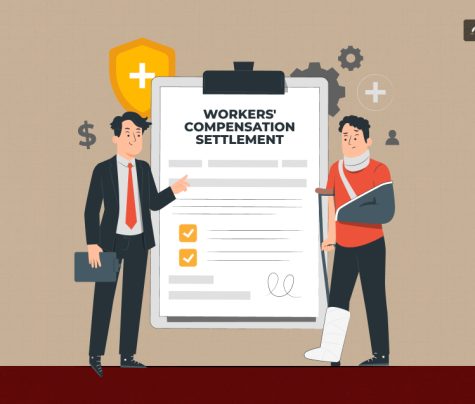
Employee terminations are an unfortunate fact of business life, but they must be carefully managed to avoid falling foul of the law. Employment law in Canada provides considerable protection for employees, meaning employers must adhere to specific processes when terminating employees to ensure it is done legally.
These include the observance of statutory notice periods, contractual terms, and other obligations imposed by provincial and federal employment standards. Lack of compliance may result in severe legal consequences to the employer, including wrongful dismissal claims.
Importance of Employment Contracts
A critical area of ensuring proper termination management and legal risk is employment contract use. A well-drafted contract should cover the terms of employment, including dismissal, notice period, and severance pay.
Most employers in Canada have inferior or outdated contracts that have caused problems at the time of the employee’s release. For Employee Terminations Without Legal Risk, employers must review their agreements regularly and revise them as needed with the legal advice of an attorney expert in employment law.
Giving Due Respect to the Statutory Notice Periods
Under Canadian law, there is an entitlement to notice of termination or pay instead of notice provided by the relevant provincial employment standards legislation. For example, in Ontario, the ESA minimum notice based on length of service prescribes the following:
- Employers must also consider the additional entitlements provided at common law,
- Which can give rise to substantially more extended periods of notice.
- Failure to deal with these requirements can give rise to claims
- for wrongful dismissal and significant settlements.
Understanding Common Law Notice
In addition to statutory requirements, Canadian courts have developed common law reasonable notice. It’s a judge-determined period that looks at an employee’s age, length of service, job responsibilities, and availability of similar employment. Standard law notice often far exceeds the minimum statutory notice.
As such, an employer must consider the likelihood of paying more than the statutory minimum when planning a termination. Failure to consider standard law notice can lead to litigation, even when statutory requirements are met. So, that’s a static thing to follow if you want to process employee terminations without legal risk.
Does the Employer stand a chance?
Is your employee not generating results?
You want to remove the employee, but The Canadian Common Law stands tall?
Don’t worry. Check out what happened in Bertsch v. Datastealth Inc., 2024 ONSC 5593. The dismissed employee resorted to Common Law and claimed no reasonable termination notice. The employee’s claim was based on the Rule 21 motion.
What is Rule 21 in employee termination?
Rule 21 allows you to ring the court asking dismissal of an order on any point of law that might validate or nullify the standing order.
The employee was dismissed without cause after he worked eight and ½ months with the employer. But received only 4 weeks of payment, instead of notice. On that note, the minimum entitlements under ESA say that the employer should give at least 1 week of notice.
The employee claimed that the termination was illegal and claimed 12 months of severance payment. The court found that the termination provision (4 week’s payment instead of 1 week of notice period) is clear and well enforceable. Meanwhile, the defendant could not prove any more points to upturn the termination decision once Rule 21 was imposed.
What lesson should employers Take From Here?
There is a grave lesson for employers here. How to smoothly terminate an employee, if the person does not fit in your organizational map? Firstly, draft your termination provision properly with mediation. Moreover, try to reduce the financial liability of the termination as much as possible.
If the employer had given only 1 week’s severance pay instead of 4, the court might have thought otherwise. So, employers must compensate separating employers adequately. Thirdly, note the termination language you’re using.
Indeed, you cannot dismiss an employee “just like that.” Employee Terminations Without Legal Risk are possible. However, you have to get the basics right. The Ontario Court has already flagged that illegal and forceful terminations are a grsocietal concerniety.
But employers can cut the slack easily if they can remember the points I mentioned. On that note, remember, even nonunionized employees can ring the court if removed unjustly.
What’s in there for employees?
The Canadian law is on money for employees. If you think you are illegally dismissed, please file a case within 3 months of dismissal. Here are the steps you should follow in sequence:
Seeking Legal Advice

Given the intricacy of Canadian law on employment, there are cases where terminations need advice from a lawyer. The employment lawyer in Edmonton advises the employer on statutory requirements, standard law notice, entitlements of severance, and considerations about human rights.
In this regard, lawyers offer reviews of termination letters and agreements for legal compliance. Indeed, investing in such professional advice can save the employer substantial time and money.
Providing Adequate Severance Pay
Severance pay is another essential factor when terminating a worker in Canada. Not all separations entail severance, though provincial legislation does create an entitlement for individuals who meet the threshold based on length of service, number of employees, or both.
For instance, Ontario’s ESA calls for severance pay if there has been more than five years of continuous service if the employer’s payroll for that year exceeds $2.5 million. In addition to statutory severance, common law will often impose an obligation to pay severance equal to the employee’s reasonable notice period.
Constructive Dismissal Claims to Avoid
Constructive dismissal refers to an employer implementing a fundamental change in an employee’s job without the employee’s consent, which forces them to quit. The changes may relate to the nature of the job duties, pay, or work location.
In Canada, constructive dismissal is a termination, and the employer may be found liable for notice or severance. Employers have to be very careful when making changes to terms of employment to avoid claims of constructive dismissal.
Documenting Performance Issues

Performance issues remain one of the most common reasons for employee dismissals, although employers must document such a performance situation to justify an employee termination.
The courts in Canada typically need employers to prove they have been given a chance for the employee to improve and warn him/her through clear communication of expectations. Detailed record-keeping on performance appraisals, warnings, and improvement plans often proves crucial evidence if/when such a case winds up in court.
Dignity in Termination
The whole process’s outcome can be affected by handling the termination meeting. Also, the employees have the right to be treated with dignity and respect, however tricky or sensitive the matter may seem.
The employers should have an apparent reason for the termination and offer any applicable severance or notice; in return, they should give the time to the employee to ask his questions. Having terminations done respectfully and professionally reduces the likelihood of legal consequences and damage to reputation.
Letter of Termination
A termination letter is a formal document stating the reasons for dismissal, the employee’s final entitlements, and any next steps. Although a letter of termination is considered a best practice in Canada, it is also, in many cases, a legal requirement. This document proves that the employer has complied with statutory and contractual obligations. To avoid misunderstandings, employers should ensure the letter is clear, concise, and legally compliant.
Summary Dismissals without Cause
Dismissal without cause is Canada’s most common type of discharge; an employer can dismiss employees for no reason. In exchange, however, an employer is burdened with the obligations of notice or pay instead of notice and/or severance pay, if statutory.
An employer also has to be satisfied the firing is not discrimination nor a reprisal as prohibited by the myriad of human rights statutes. Similarly significant for the employer, they need to avoid indefinite and subjective grounds of dismissal; the reason, too, can be challenged in a trial court.
Cause Summary
One of Canada’s most challenging areas of employment law is terminating employees for cause. Cause has been defined as serious misconduct, such as theft, fraud, or gross insubordination, which fundamentally violates the employment relationship. In proving the cause, employers must meet a high legal threshold because the courts review such claims closely.
Employers should consult with legal counsel before moving forward on termination for cause to ensure they have adequate evidence to support their decision.
Human Rights Considerations
Employers must consider the human rights legislation when dismissing employees. In Canada, Federal and provincial human rights codes prohibit employees from being discharged on these protected grounds: race, gender, age, ability, and religion. Consequently, terminating an employee’s needing accommodation at the workplace because of their disability can amount to a claim for discrimination. An employer must consider the specific facts of every termination to determine whether it will stand up to human rights analysis.
The Role of Workplace Investigations
Investigations are frequently necessary in the workplace when the reasons for termination include allegations of misconduct or harassment. An employer in Canada has the added duty to conduct a comprehensive and fair investigation to ensure that the actions are both supportable and fair.
A poorly conducted investigation can undermine the employer’s case and lead to legal challenges. Employers should document the investigation process and findings to provide evidence of due diligence.
Employee terminations are sensitive and legally complicated processes that take a lot of planning and execution. Knowledge and adherence to Canadian employment laws, respect for notice and severance entitlements, and treating employees with dignity alltribute to mitigating legal risk and maintaining reputation.
While the prospect might be daunting, a proactive and informed approach to termination will help navigate this challenging aspect of employment management to success.
Read Also..
- The 3 Common Signs Of Wage Theft By Your Employer
- Employee Rights You Didn’t Know About But You MUST
- Understanding Employee Injury: Rights, Claims, and Legal Help











0 Reply
No comments yet.